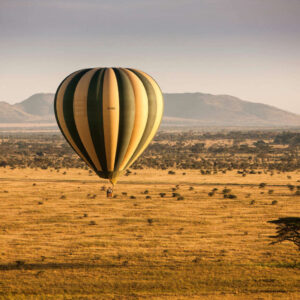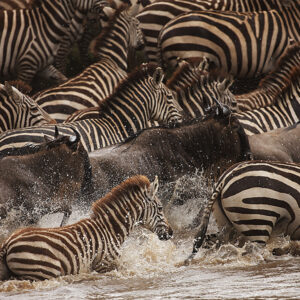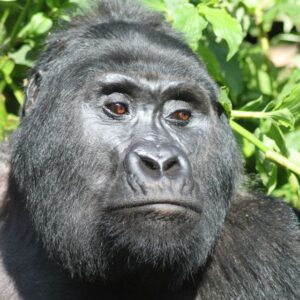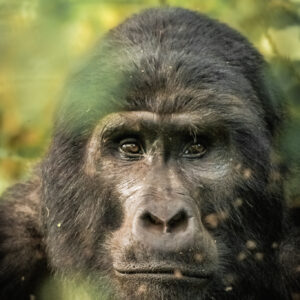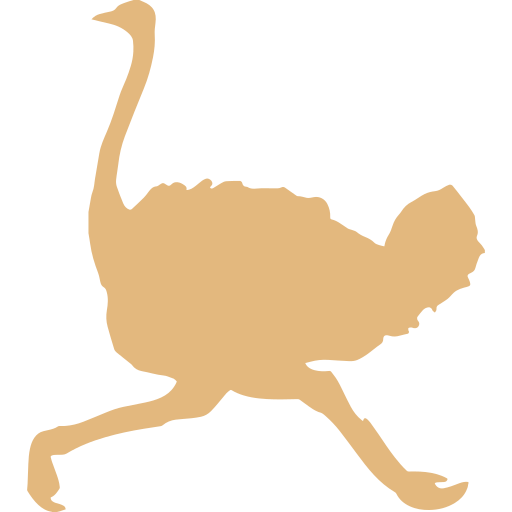On Mountain Gorillas

“In 5BC, Hanno the Navigator encountered apes on his African expedition. The Carthaginian described the apes as “gorillaie” meaning hairy and savage. Millennia later, Hanno’s description was the basis of gross misrepresentation of gorillas in popular culture, contributing to the grave existential threat that saw mountain gorillas numbers plummet to 459 in 1994.
But, efforts to protect gorillas through gorilla trekking averted extinction. Today(2024), there are an estimated 1,096 gorillas, a thriving forest habitat and many African livelihoods are sustained thanks to trekkers who support conservation. Gorilla trekking is an enthralling safari experience, where guests trek into the rainforest to find and observe gorillas in their natural habitat. It’s a bucket list must-do. Get in touch for the ultimate gorilla trekking odyssey.”
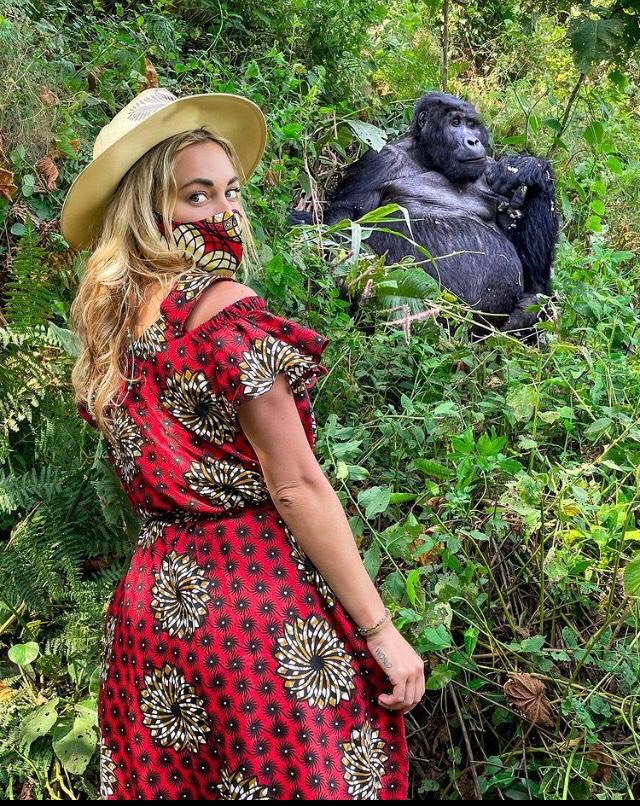
Popular Gorilla Safaris
-
$4,550 per person
-
$3,400 per person
-
$4,200 per person
-
$3,500 per person
-
$18,000 per person
-
$3,700 per person
All About Mountain Gorillas (Gorilla Gorilla beringei)
Africans have always lived a largely non dramatic existence with gorillas. However, the European experience was terrifying and came to influence image of gorillas. The word gorilla comes from Hanno the navigators African origin word for the hairy beings he encountered on his expedition along the west African coast in 5 BC. The word found its way from the Punc tabs of Hanno via Greek into modern language as it was used to describe hairy wild animals. First used to describe apes by Thomas Savage a US missionary in 1847
Anatomy
Mountain gorillas are one of three sub species of gorillas. They are the largest primate on earth and can weigh up to 462lb (210kg). Gorillas have a robust build with thick arms and short legs; wide hands and feet with thick digits. Gorillas have a long silky black coat and mature males adorn a conspicuous silver saddle as hair turns grey with age.
Diet
Mountain gorillas eat leaves stems and shoots of some 58 different plants. Roots, black berries and vernonia trees are taken in small amounts to compensate for a diet deficient in vitamin B12, potassium and calcium. Gorillas do not share food or use tools but are very skillful at opening and eating the palatable parts of each plant whether roots or fruits.
Gorillas in the popular culture
Before gorilla studies of late 20th century, gorillas were once portrayed as savage and the most dangerous of all wild animals. Contrary to images, portrayed in popular culture, gorillas are gentle even pathetic driven to brink of extinction by our species. Male gorillas however have a reputation. Their legendary ferocity is based on the spectacular charging displays of silverbacks defending their families. 99% of their charges are bluffs with the often successful objective of intimidating any would be attackers. Males will also heroically fight to death to defend their families against humans or any other predators.
Habitat
Mountain gorillas reside in the montane tropical forests of 9200 -11,200 in Uganda, Rwanda and DR Congo. Night temperatures can fall to freezing126
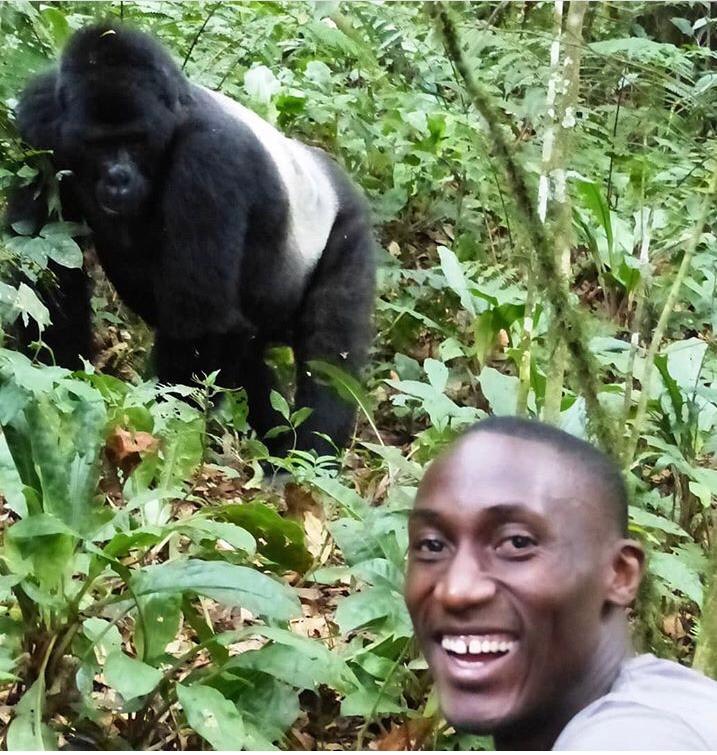
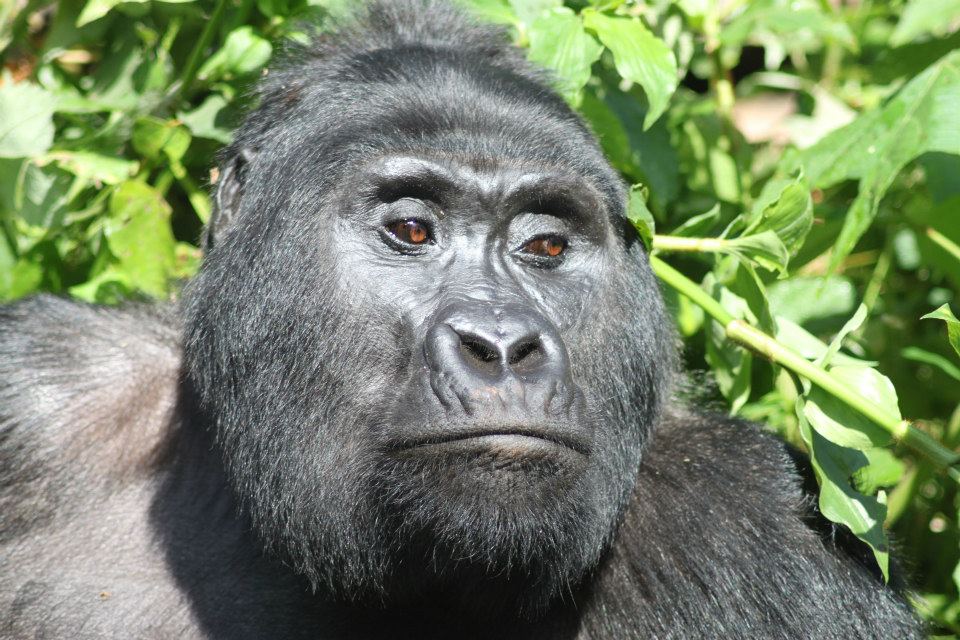
Gestation and reproduction
Reproduction is very slow with intervals of 4 years between birth. Gestation is 8.5 months with a high mortality rate of 46% in Volcanoes Ntaional park. A female can produce up to 6 off spring in her life time whereas a male can leave up to 20 offspring in his lifetime.
Activity
Mountain gorillas spend half the day feeding, 30% travelling and 40% resting mainly during the hot hours of midday. Activities are closely synchronized, revolving aorunf the silverback.
AT night or during the afternoon siesta gorillas will make nests. These nests are crucial as they enable gorillas to sleep lying down without rolling from trees or rolling down the slope.
Social/Mating
Gorillas are social with a family consisting of an adult male the silverback, a black back and a harem of females. Groups have been known to grow up to 30 individuals but often splits occur. Groups have also been known to have more than one silverback.
Gorilla home range is 1.5 – 3 miles. Males have rigorous sexual competitionin their nonterritorial polygynous system. The dominance hierarchy is based on size and seniority.
Male gorillas mature at 15 years. To compete for a harem a male must have an established home range and garner the self assurance to confront any rival. A harem is acquired a female at a time either by persuasion or by conquest. Females start adolescence at 8 years then transfer to another group. Some join large established group buts more elope with a lone silverback or join small group. This is because the first wife ranks highest so a lone silverback is considered the best catch.
On Gorilla Trekking
TREKKERS hike into a national park in search of mountain gorillas. The trek is led by rangers who lead a group of maximum 8 people. Gorilla trekking can be done in Bwindi Impenetrable Forest National park in Uganda or in Volcanoes national park in Rwanda which is also known as Mgahinga in Uganda and Virunga in DR Congo. There are generally 3 parts of the experience
Part 1: The Search
Entertainers cheer up trekkers after a briefing. The trek then commences with the help of intelligence from the early rangers who set off at dawn in searcg of the gorillas. The search trek can take anywhere between 15 minutes to 4 hours. Our shortest trek was in Buhoma Bwindi Impenetrable Forest where we found the Rushegura group after only 15 minutes. This is the trek normally preferred by those that can’t find difficulty hiking further. Our longest trek was trekking the Mucunguzi group in 2022 in Rushaga. The trek to find the gorillas took nearly 3 hours.
The highlights here is the forest and other animals that reside in this habitat. The majesty of the blanketed rain forests is easy to overlook with the promise of seeing the gorillas. But it should not be. The mountains views are like nothing else.
- Sanitise and wear a mask before getting in proximity with gorillas
- Avoid close contact with the gorillas to avoid the spread of diseases. Keep a distance of about 7 meters away from gorillas at all times.
- Mountain gorillas share about 98 percent of their DNA with humans making them very susceptible to human infectious diseases.
- Stand still in case the gorilla charges and avoid direct eye contact with gorillas.
- Do not use flashlight camera and in case your camera has, please turn it off before you begin taking photos of these creatures.
- Do not go to trek mountain gorillas if you are sick-please cover your mouth in case you are coughing and nose when sneezing.
- No eating or drinking in the presence of gorillas
- Leave the habitat the way you found it. No dumping or easing oneself in the gorilla habitat.
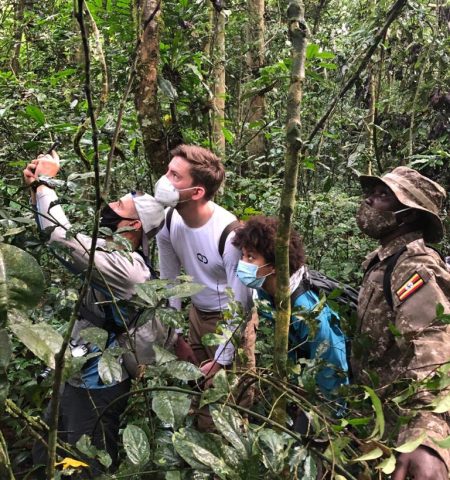
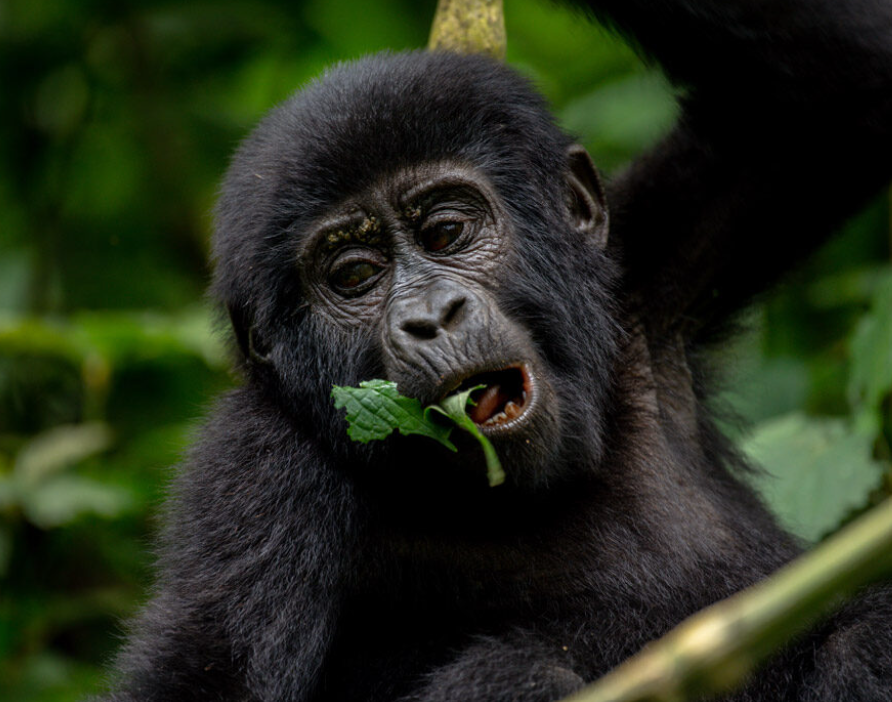
Part 2: Watching Mountain Gorillas
Part 3: Lunch and the trek Back
The third part starts once you leave the gorilla family. The rangers walk you to a part of the forest where you can enjoy a meal. Thereafter, the walk back affords you the opportunity to see more of the luxuriant greenery of the gorilla forest.
Gorilla trekking in Uganda or Gorilla trekking in Rwanda are that one safari encounter that we cannot aptly describe. Words, photos and videos just cannot do the experience justice. So come see for yourself.
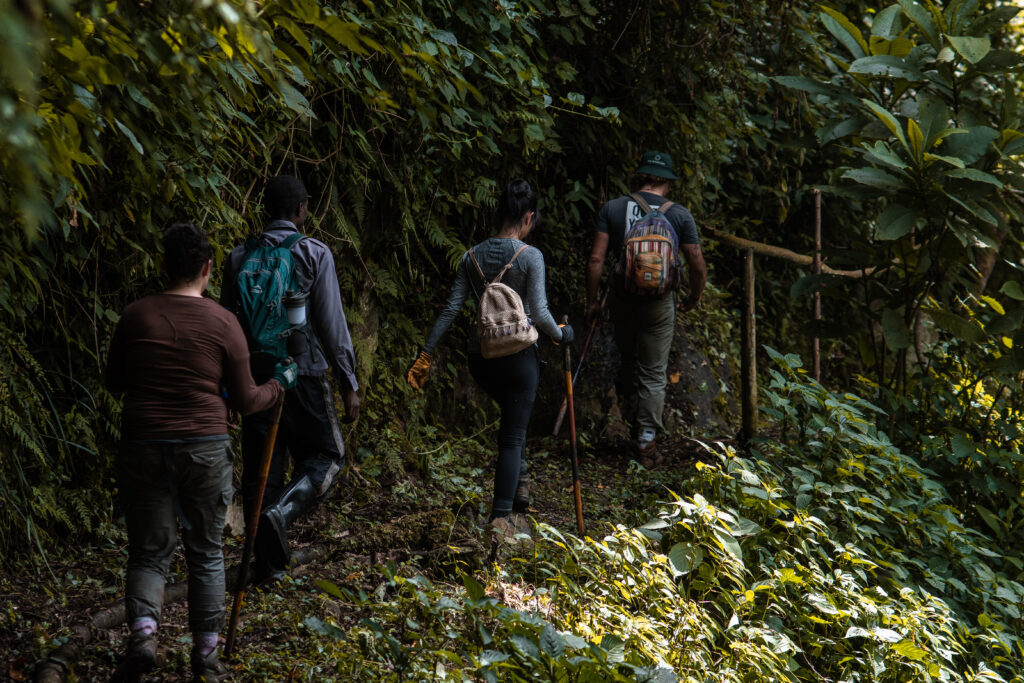
GORILLA TREKKING FAQS
A strenuous hike into the dense mountain tropical forests of East Africa in search of mountain gorillas.
SEE MORE on our blog… (https://www.buutusafaris.com/what-is-gorilla-trekking/)
No, if all the rules and guidelines are followed. Gorilla trekking is safe. Gorilla trekking is led by professional guides and right gear gorilla trekking is as safe as hiking. There are rules and guidelines that have been used for decades to ensure the safety of the mountain gorillas and of the trekkers. We have never had a single injury in nearly three decades of operation.
Yes, gorilla trekking is safe. Trekkers are led into the forest by experienced rangers who protect the trekkers with guns and machetes in the event of any threat from the animals.
Yes it is. Besides the fact that gorilla trekking is the foundation of protecting one of the most unique ecologically rich biodiversity, yes. But as we say, words, photos nor videos cannot do gorilla trekking justice. You have to see for yourself.
- Two facemasks hand sanitizer.
- A decent light waterproof jacket.
- A pair of trousers, a long-sleeved shirt (t-shirt), and longer socks.
- A pair of hiking gloves
- A lightweight pair of waterproof hiking boots.
- A tin of insect repellent.
- Hiking stick (Ask your guide before you start)
- Lunch box and Energy giving snacks (Normally provided at lodges).
- Biodegradable tissue or toilet paper.
Professional Gorillas safaris start from $2,100 to $17,000 per person for ultra luxury safaris that last up to 15 plus days. For more about prices see our blog…..(https://www.buutusafaris.com/how-much-does-a-gorilla-safari-cost/)
Gorilla trekking permits which are the biggest components of safari cost $700 in Uganda and $1500 in Rwanda.
Gorilla trekking though strenuous can and has been done by seniors. At Buutu Safaris we take seniors. We have had seniors of 82 years. The most senior person is a 93 though she used a helicopter option.
The dry season months of Jan, Feb and March and June July August are best for those who prefer a less strenuous hike. However, the rainy season months offer a wholesome exercise as trekkers experience the forest in its full luxuriant bloom. For those who prefer longer hikes and adventure, rainy season months are best. Rainy season months also afford incredible views of the country as the skies are clear after the rains.
To comprehensively answer this, one needs to understand the border history of Uganda and Rwanda. The borders are recent colonial impositions to divide in an irrational manner. These imaginary lines invented different countries/states yet the countries have people that speak the same language, the same landscape and the same biodiversity.There is no difference between Uganda and Rwanda gorillas as they all live in the same ecosystem.
The experience is however different as Rwanda is largley a high end luxury destination whereas Uganda is still a mid range destination.
For more information, see our blog… (https://www.buutusafaris.com/uganda-or-rwanda-for-gorilla-trekking/ )
Yes, gorilla trekking has saved gorillas from extinction, seeing the conservation of one of the most unique ecological areas in the world. If the rules are followed then yes. Gorilla trekking has focused on inclusive travel that benefits locals especially those from the gorilla forests while promoting conservation of biodiversity. (See more – Click link to blog post)
Gorilla trekking is the most successful conservation project in Africa for the last 20 years. Gorilla trekking gives insights into how humanity can create a green sustainable economy.
Having said that, the authorities need to limit the numbers of trekkers per day which means the price needs to rise further. Gorilla numbers increased during the lockdown so there is a tangible benefit from having less interruptions by humans.
Mountain gorillas live in the mountain forests of Uganda, Rwanda and in DR Congo. Half the gorillas live in Bwindi Impenetrable Forest whereas the other half live in a forest shared by Rwanda, Uganda and Congo.
Gorillas eat mainly a largely vegetarian diet of leaves, fruits and shoots. Mountain gorillas also supplement their diet with larvae, snails, ants and roots, bark and rotting wood.
Gorilla nose is flat. Diana Fossey in her extensive studies found that mountain gorillas have unique patterns of wrinkles on their nose which differentiate them from each other and decided to use them in their study and research about these primates. These wrinkles are known as “nose prints.
The 2018 mountain gorilla census recorded 1,063 mountain gorillas. As of March 2023, we estimate there are at least 1,096 mountain gorillas given the high birth rate during COVID pandemic. We have seen 12 different babies in the last 16 months in Uganda alone.
Bwindi Impenetrable Forest national park is located in the Kigezi highlands of south western Uganda, East Africa.

